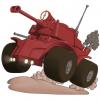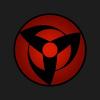Im gonna be scanning (using cameras - photogrammetry method) real people (clothed, different cloths). These realistic clothed human scans will be used for several purposes, mainly render videos, real time aplications (game)etc. Thus they need to be rigging-skinning friendly. Also the people should hold positions which will allow (in real life) realistic cloth wrinkles and creases, that should look "realistic" and "possible" in all possible poses the resulting 3D character could hold. So which pose is both:
1) Friendly and easy for sub-sequent rigging and skinning for animation purposes...?
2) "Physically" friendly (in real life) allowing to create cloth creases and wrinkles that will look realistic and possible on later 3D mesh regardless of the pose it will be in (running, jumping, crounching, crawling etc...)
T-pose is not good for this. A pose is much better. But maybe A pose with forearms bend forward a little bit like here would be even better?:
http://www.bodyscan.human.cornell.edu/feature_bodyscanner/img/about/booth_lg.jpg
https://s31.postimg.org/wf0iw13nv/views2.jpg
What pose is the best for scanning realistic humans (cloths)?
I dont need palms/fingers that much because they will be added/replaced later, i care mainly about the cloth scans, not so much about the "human parts" (head, palms+fingers, feet...)
So far i got this result...
https://s31.postimg.org/9s8a9qlyz/views.jpg
Also, in your experience, what other rules should i follow? For example is it a good idea to have some clothing creases and wrinkles in elbow space of the future mesh? Wont it do some mess when rigging? Should i try to adjust the cloth on the human model posing for me in these places (elbows) to avoid creases for future skinning bending in the area?
What other tips do you have?
What Pose For Realistic 3D Human (Cloth) Scanning (For Animation)?
Don't take my word on it, because I've never used photogrammy before. But I don't think it's possible. The method appears to be relying mostly on geometry that's who's topology is expected to be nearly static.
I guess you could try getting multiple high speed cameras, and record the cloth from multiple angles. But the issue here is that cloth can fold onto it's self, and reach a complexity that can't be captured correctly with modern technology.
I'd suggest for you to try and simulate the cloth in a program like 3Ds Max, Maya, or Blender, and then export the baked geometry animation.
Seconded... don't try to scan cloth. And don't try to use procedurally generated meshes from scans directly for rigged characters. You will need to retopo those, as the edge flow most probably will not be ideal.
As for clothing, what is the purpose of scanning those? Last thing you want in your clothing for animation are folds, and its literally impossible to scan clothing without having folds in it.
Best approach for clothing ready for animation has been marvellous designer. This is how you should create 3D Clothing. From the parts, virtually stitched together so you can simulate the correct behaviour with physics. There is zero gain in trying to scan those parts as 95% of them are just flat fabric, unless you want to just scan the microtexture of the fabric (and for that, nobody needs to wear the fabric).
Unless you go for a rather low poly character with the folds and wrinkles mostly baked into normals. Then I guess you could get away with scanning....
Best pose for rigging depends on what it is used for. T-Pose is the old way of doing things, but was only really needed before weight painting came into fashion. Nowadays, you see varying poses, most of the time with arms at 45° instead of 90° angles (A-Pose). Because most of the game characters will hold a gun 80% of the time, so the rig has to look good doing that. And that T-Pose is bound to produce problems with shoulders as soon as the arms are lowered.
On the other hand, of course you get more texture stretching that way under the arms when the character raises his arms.
As for where to put wrinkles and all that... really depends on what you want to use it for. Some AAA Games have started to use "Wrinkle maps" to simulate wrinkles in the face or clothing as the joint bends or the face deforms, triggered by different means. Most of the time though, carefully placed wrinkles in elpow pits and knee pits suffice to make the model look good in 95% of the poses... some wrinkles being left there when the joint stretches is not totally off for many kinds of clothing (Leather comes to mind), and you can just go easier on those wrinkles for other types of clothing (or completly leave them away... depending on how the model is used, missing wrinkles might not really be noticable).
I think the best pose is when each joint is at it's center of possible movement (arms and legs slightly forward and outwards, knees and elbows 45 degrees, slightly bended spine).
I've used that 'relaxed' pose for modeling to reduce skinning problems - it's better than e.g. A pose.
But the problem is: This pose is uncommon and so we still prefer something like A pose for modeling because we better know how a human looks in A or T pose.
Maybe it's worth a try for you if your models are willing to keep that unconfortable pose long enough :)
I agree retopo is always necessary, but that's still far less work than manual modeling from scratch. (Manual modeling may include some retopo steps as well e.g. for different LODs)
The cloth issue can usually be handled during retopo es well, but the modeller needs experience and final technical details should be known upfront, e.g. one or multiple wrinkle maps, full cloth simulation for some pieces etc.
I agree retopo is always necessary, but that's still far less work than manual modeling from scratch. (Manual modeling may include some retopo steps as well e.g. for different LODs)
The cloth issue can usually be handled during retopo es well, but the modeller needs experience and final technical details should be known upfront, e.g. one or multiple wrinkle maps, full cloth simulation for some pieces etc.
Depends on the requirements. A low detail human model for a game with a camera set further away can be sculpted at break neck speed. I am talking about single digit hours here. Maybe takes the same time as scanning a human and clean up the result. Maybe even less, if you need multiple takes for the scan. And you certainly need no reallife model or expensive hardware for that.
This character took me 6 hours to finish the sculpt... yes, its kinda "low-fi" for an isometric view, but I am nowhere near a professional artist. I would bet an artist could churn out something of that quality in half the time if needed:

How long will a single session of scanning take, especially if you also want to drape the clothing correctly? 1 Hour? 2 Hours? How long does postprocessing take? Will you be able to use the scanned result directly, or do you need to sculpt adjustments to it?
A more complex sculpt for a character model usable for close ups will of course take far longer. Here a scan can certainly help.... though at that point I doubt you want to work with scanned clothing. That will not give you a clothing model that is flexible and animatable enough for the use case. A handcrafted clothing model from a tool like "marvellous designer", and physics driven animation will work better here.
So I am questioning a little bit what is the use case for this scanning project.
Well im not aiming for holywood style production quality, and so i believe "simple" scans of cloths on characters with A pose still have their place :-).
So you advice to make A pose with slightly forward bend elbows, do i get it right?
So somethine like this:
http://www.3dscanstore.com/image/cache/data/Colour Male Clothing/Male 01/Pose 05/05-700x700.jpg
Also, whats your oppinion on realistic creases and wrinkles on scanned cloth? How to get it right in order to look realistic and be animation friendly?
For example here (and this page belongs to a scanning profesional):
http://www.3dscanstore.com/image/cache/data/Colour Male Clothing/Male 01/Pose 05/03-700x700.jpg
There are creases and wrinkles on both elbows and knees. Mainly on knees they are quite prevalent. Is this good? Wont it look bad when animating and the knee is bending? I would think so...?
I believe regardless of the reputation of this company, i believe they might have made a mistake here... The creases and wrinkles especiall on the knees wont look good on the final animated character... what do you think?
There are creases and wrinkles on both elbows and knees. Mainly on knees they are quite prevalent. Is this good? Wont it look bad when animating and the knee is bending? I would think so...?
You are right, it's very bad for animations, if it was a animation scene we would use a morph target to smooth the folds on the bend of the knee.
For games you would need to smooth the mesh and somehow remove the normal map from that exact point of the bend.
For games it isn't worth it as most people wont notice or don't know that it has to stretch.
Thus they need to be rigging-skinning friendly.
I have not grapsed the way you scan, so I cannot advice on pose?
Weighting has nothing to do with pose, it can be an arbitrary pose and it will not influence weighting, but, the one thing: You should have autonomous verticies to no be too close to each other. (you may rip yourself of transfer algorithms, mirror algorithms etc.).
Again, define scan , and what purpose of pose is (weighting?).








